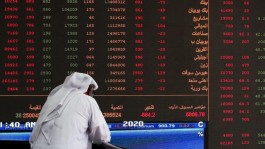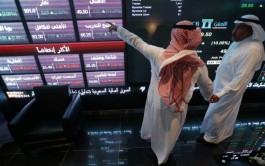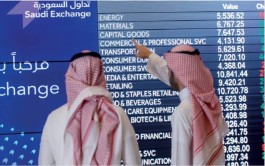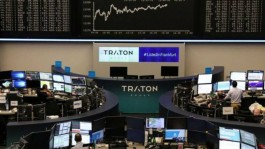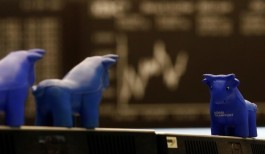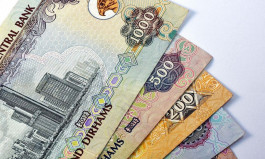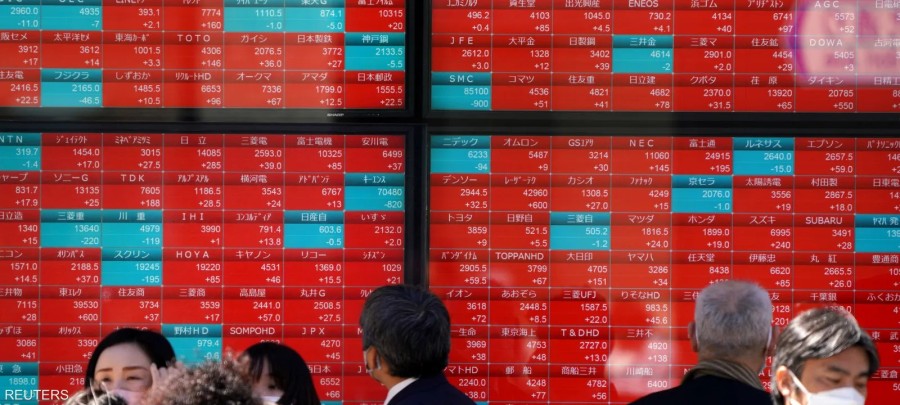Stocks rose, along with copper and oil prices, after signs that the United States and China were nearing a trade agreement, sparking a broad rally across asset classes. Meanwhile, US Treasury yields fell along the curve, and gold declined.
Asian stocks rose 1.5% to hit a new daily high, with shares in Japan and South Korea rising more than 2%. Indices in China and Hong Kong also posted gains at the open.
Futures for the S&P 500 and Nasdaq 100 advanced in Asian trading, after the two major indices closed last week at record highs.
Copper, a key indicator of global growth, jumped alongside oil, supported by optimism that a potential agreement between Washington and Beijing will boost global demand.
China-linked assets rebound
The Australian and New Zealand dollars, both currencies used as indicators of exposure to the Chinese economy, rose, while the US dollar experienced mixed performance against other major currencies. US Treasuries fell along the curve, with the 10-year yield rising more than two basis points to 4.02%.
It looks like a clear win-win for both sides, said Charu Chanana, chief investment strategist at Saxo Markets in Singapore. Wider markets will treat this as a short-term risk signal, but sustaining momentum requires fundamental support, she added.
Markets optimistic ahead of the Fed meeting
The easing of trade tensions between the world's two largest economies has given stocks a fresh boost, extending the rally that began in April after markets tumbled after President Donald Trump imposed new tariffs to rewrite global trade rules.
These gains face a crucial test this week, with the US Federal Reserve's decision and major technology companies' earnings reports expected to provide clues about the strength of earnings growth.
Monday's moves showed that investors welcomed the potential US-China trade agreement, which coincides with Trump's Asia tour. Soybean prices also jumped on rising hopes for a revival in bilateral trade in the crop.
Top negotiators from both sides said over the weekend they had reached an understanding on a range of contentious issues, paving the way for Trump and Chinese President Xi Jinping to strike a deal that would ease the tensions that have rattled global markets.
Initial agreement and positive indicators
Two-day talks in Malaysia concluded on Sunday, with a Chinese official saying the two countries reached preliminary consensus on issues including export controls, fentanyl, and shipping tariffs.
While the general mood appears optimistic, the true impact on the market will depend on the Trump-Xi meeting, said Delaney Wu, a strategist at Pepperstone Group, adding that this event remains the most important catalyst in determining whether any agreement can actually be implemented.
These positive signals come after weeks of tension, with Beijing announcing new export restrictions and Trump responding with a tit-for-tat threat to impose massive new tariffs, raising fears that the world's two largest economies could once again slide into a full-blown trade war.
A week full of data and central bank meetings
Traders are looking forward to a busy week of monetary policy decisions, including meetings from the Federal Reserve, the European Central Bank, and the Bank of Japan. The Fed is expected to cut interest rates by 25 basis points.
Wall Street saw a rally on Friday after weaker-than-expected inflation data reinforced investors' belief that an interest rate cut was imminent.
Core inflation registered its slowest rate in three months, a development welcomed by traders who had been dealing with a significant data shortage since the start of the government shutdown. The European Central Bank and the Bank of Japan are expected to keep interest rates unchanged.
Among the major companies that will announce their results this week are Apple and Microsoft.
Hebei Chen, an analyst at Vantage Markets in Melbourne, said that the next catalysts, such as the Federal Reserve meeting, will quickly refocus the market on economic fundamentals, to test whether this optimism can translate into sustainable growth momentum.









